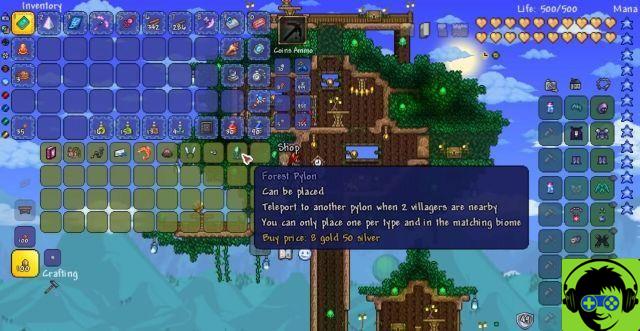
The Rocky Mountain Bull Elk hails from Ambarino and New Hanover. Their herbivorous diet includes grasses, leaves, bark, and plants. Els are easily surprised, so it is advisable to keep as much distance as possible while tracking. Like other large mammals, a good amount of sedative is needed to make them unconscious.
- Found near the Little Creek River and in the Cumberland Forest.
Rocky Mountain Cow Elk
Rocky Mountain Cow Elk are native to Ambarino and northern New Hanover. Their herbivorous diet includes grasses, leaves, bark, and plants. Moose are easily startled, so it is advisable to keep as much distance as possible while tracking. Several shots of sedative will be necessary to bring down such a large animal.
- Can also be found near the Little Creek River and in the Cumberland Forest.
American Badger
The American badger can be found in the more arid climates of America. It is a fossorial carnivore that attacks squirrels, moles, prairie dogs and voles. Badgers require very little sedation before they fall unconscious.
- Found by Riggs Station or Tall Trees. You can also find them around Donner Falls in Ambarino.
grey Wolf
The gray wolf's primary habitat is in the Big Valley area and north of the tall trees. As carnivores, their diet consists of mountain deer and goats, as well as smaller animals like birds, beavers, and fish. A substantial amount of the sedative will put a wolf to sleep.
- You can find them in packs around tall trees, Cumberland Forest, and grizzly bears. I could only find them at night.
Wood wolf
The Timber Wolf is native to the Cumberland Forest and grizzly bears. Its carnivorous diet consists of elk, mice, rabbits and squirrels. Be prepared to give several injections of the sedative.
- Found in the same areas as the Gray Wolf. May be a little rarer than the gray wolf. Again, I only found them at night.
Rocky Mountain Bighorn Ram
The primary habitat of the Rocky Mountain ram is the grizzly bear region. They are herbivores, consuming mainly grasses and sedges, but they will also eat woody plants in winter. The easiest way to bring down a ram of this size is to use a good amount of sedative.
- Can be found in Cumberland Forest and Grizzlies East.
Rocky Mountain Bighorn
The Rocky Mountain Bighorn Sheep is native to the Grizzlies and the Cumberland Forest. This herbivore lives mainly on grasses and sedges, as well as woody plants in winter. Sheep need a reasonable amount of sedative before they can be collected.
- Also found in Cumberland Forest and the Grizzlies.
California Valley Coyote
The California Valley Coyote is found across New Austin, West Elizabeth, Lemoyne, and New Hanover. Their diet is mainly carnivorous, consuming rodent meat as their main food source. A coyote needs a few shots of the sedative.
- You can stick to Cumberland Forest to minimize the distance to be covered, or you can look around The Heartlands.
Whitetail Buck
The Whitetail Buck can be found in wooded areas across the states. It is an herbivore that consumes nuts, buds, twigs and green plants. Keeping your distance when hunting deer can increase your chances of administering multiple doses of the sedative.
Found in East Lemoyne, The Heartlands or near Cumberland Forest.
White tail of a deer
White-tailed deer are found in a variety of habitats across the states, but are common in the New Hanover Forest. Lemoyne and West Elizabeth. Their herbivorous diet includes herbs, nuts, mushrooms, twigs, and fruits. Like all deer, several shots of sedative will be necessary.
- Can be found in the same habitats as the Whitetail Buck, but you can also look near Thieves' Landing, northeast of Blue Water Marsh, or just west of Strawberry.
Boars
Wild boars can be found in the states of New Hanover, Lemoyne, and West Elizabeth. They are omnivores, feeding on amphibians, reptiles, insects, worms and small mammals. They also eat roots and fruits. Several shots of sedative are necessary to kill this animal.
- Can be found near Thieves Landing, Blue Water Marsh, or near the Strawberry area.
American Bison
The American bison is native to the plains of New Hanover and West Elizabeth. As a herbivore, it grazes grains, hay and corn. Due to the size of an average bison, a large amount of sedative must be administered before a sample can be safely collected.
- You can find them between the Heartland Oilfields and Heartland Overflow, or travel to the Great Plains near Blackwater.
Pronghorn Buck américain
The American Pronghorn Buck is native to the great open prairies of New Hanover and West Elizabeth. As herbivores, their diet includes mugwort, green shoots, herbs, and medicinal plants. Several shots of sedative are needed to bring this male down.
Found in the Great Plains or the Heartlands.
American Doe Pronghorn
The American Pronghorn Doe is native to the great open prairies of New Hanover and West Elizabeth. As herbivores, their diet includes mugwort, green shoots, herbs, and medicinal plants. Be prepared to give several injections of the sedative.
- Found near the same areas as American Pronghorn Buck.
Professional advice
If you're looking for the fastest way to level up, you'll want to try growing the maximum number of samples from each animal before moving on to the next. Once you've captured the maximum number of samples for each of the animals, return to Harriet and flip them one at a time to receive the corresponding stamp in your Animal Grounds Guide. Once you have all of the buffers in the Farmland Habitat set, hand them in for a quick 1000 XP points for your role as a naturalist. Repeat this same process over and over again until you've handed in all of your samples and earned 5 XP points.


























